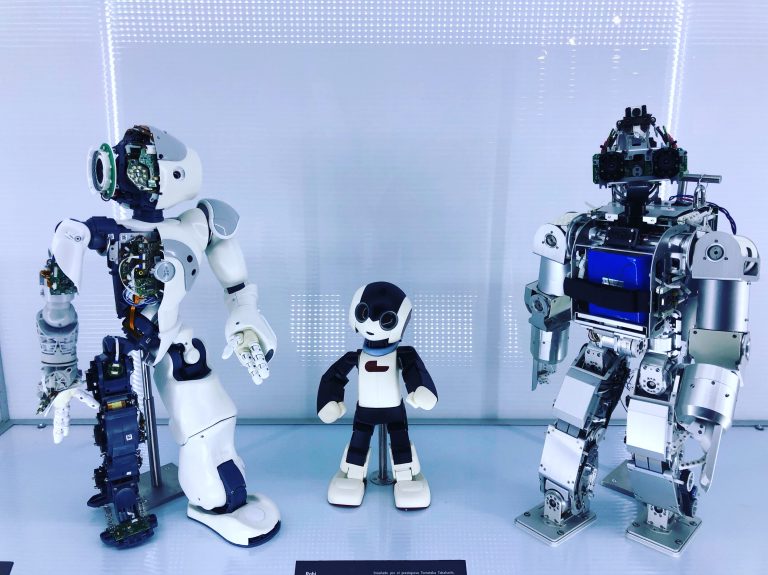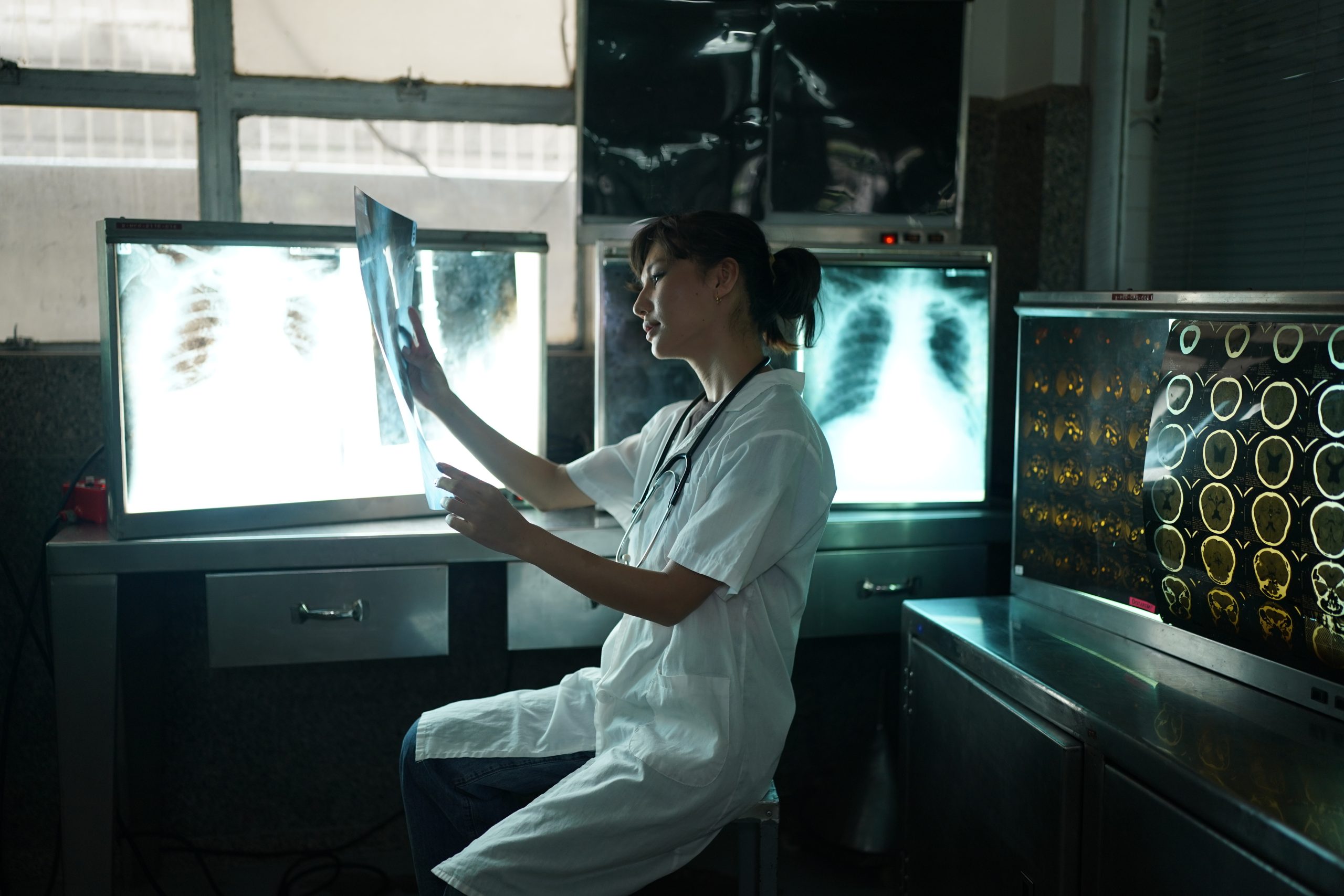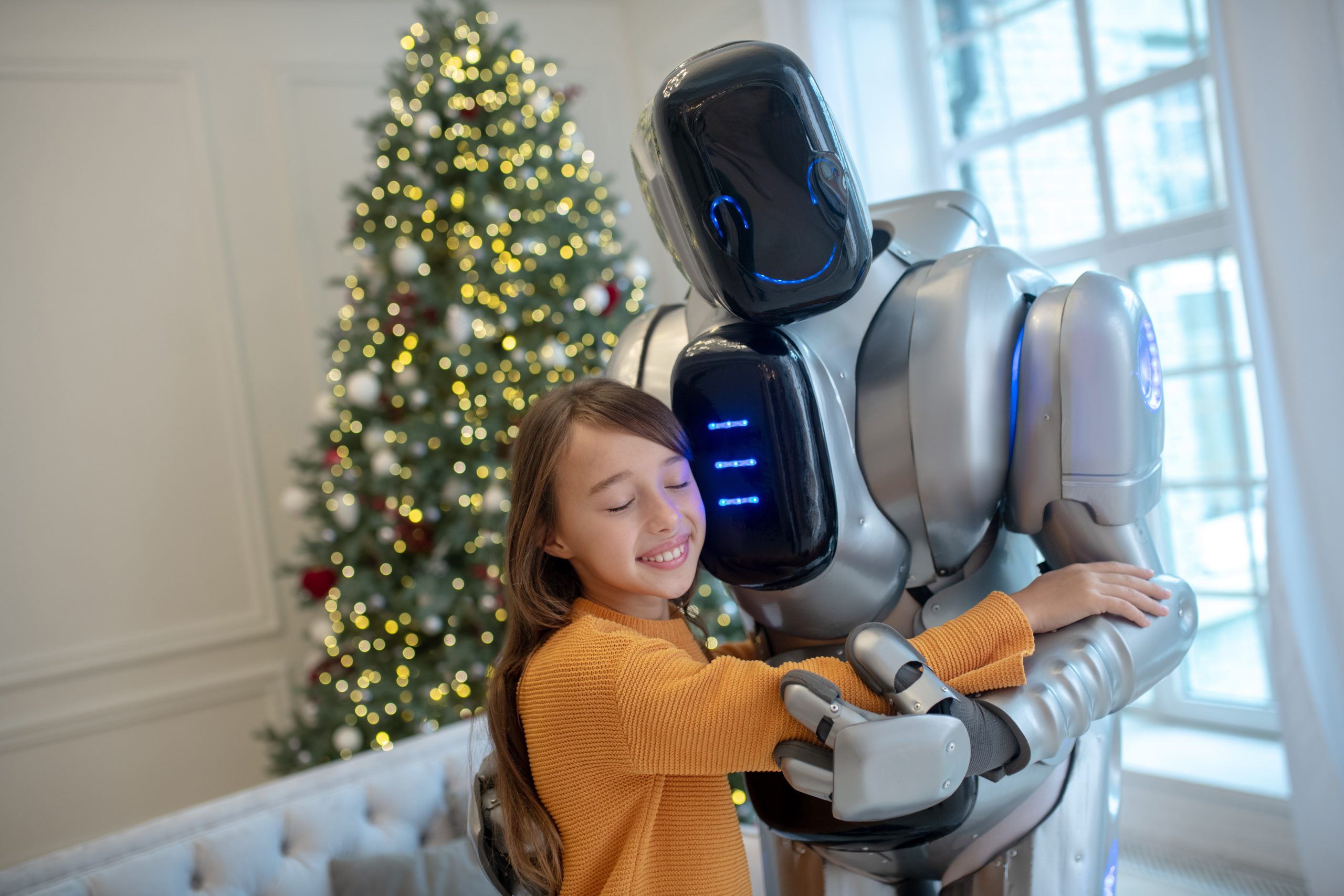Published on: June 12, 2023 Updated on: February 4, 2024
What is AI Robotics? Understanding Intelligent Machines
Author: Daniel Coombes

Artificial intelligence (AI), computer science, and robotics are continuously evolving scientific fields that have the potential to completely revolutionize numerous aspects of our lives, from agriculture to healthcare.
Nowhere is this more evident than in AI robotics, where the immense power of intelligent machines and artificial intelligence systems combine to allow robots to observe, learn, reason, and interact with the world around them.
This blog will provide an in-depth introduction to the application of AI in robotics, delving into their origins, present use cases, and future advancements. From more complex tasks to simple, repetitive tasks, we can train robots to help human beings with just about anything. So, let’s dive in and find out how.
The 4 key components of AI robotics
In this section, we will outline the four major components often used within the artificial intelligence robotics field.
1. Perception
Much like our own five senses, AI robots use sensors, such as LiDAR, sonar, cameras, ultrasonic, and radar, to gather and interpret data from their environment.
These sensors can capture visual, audio, and tactile inputs, allowing robots to:
- Recognize objects.
- Navigate their surroundings.
- Interpret human gestures and speech.
2. Learning and adaptation
AI robots have the incredible ability to continuously learn from various data sources and adapt their behavior accordingly, eliminating the need for constant human intervention. This can be done by using two different types of ‘learning’:
- Machine learning algorithms: These models can analyze vast amounts of data and recognize patterns within the information. This allows these sophisticated machines to improve their performance over time.
- Reinforcement learning algorithms: This model allows robots to learn through repetitive trial and error, optimizing their actions based on feedback from the environment.
3. Decision-making
The complicated deep learning algorithms found within artificial intelligence mean that robots can reason, plan, and make decisions.
Using logical reasoning, probability models, and optimization techniques, robots can:
- Evaluate the effectiveness of multiple options.
- Predict the outcomes of these options through simulation.
- Easily select the optimal course of action.
4. Action and manipulation
The ability to physically interact with their environment is a crucial aspect of an AI robot. AI-powered robots can be equipped with countless mechanical systems, such as robotic arms and grippers, to perform specific tasks.
Using advanced control systems, operators can ensure precise movements, enabling robots to easily manipulate objects, assemble intricate components, and perform complex actions. This means AI and robotics can take over dangerous tasks, so humans don’t have to risk their lives.
A brief history of AI robotics
The history of AI robotics is truly fascinating, full of scientific discoveries, technological breakthroughs, and visionary minds that have shaped the development of intelligent machines.
Let’s journey through time to explore the key milestones and advancements that have led us to the present state of AI robotics.
Early beginnings (1940s-1950s)
The roots of AI robotics can be traced back to the early days of computing and artificial intelligence.
In the 1940s, mathematician and logician Alan Turing proposed the concept of a “universal machine” which could simulate the operations of any other machine. This theorized technology laid the basic foundation for a computer that could demonstrate artificial intelligence.
In the 1950s, researchers such as John McCarthy, Marvin Minsky, and Claude Shannon significantly contributed to this newly developing field of study. This included the development of complex neural networks that have a similar architecture to the human brain and introducing the concept of machine learning.
Robotics emerges (1960s-1970s)
The 1960s saw the emergence of robotics as a prominent field of study. The introduction of the term ‘robotics’ is often attributed to Isaac Asimov, a renowned science fiction writer who wrote such literary classics as I,Robot, Foundation, and The Caves Of Steel.
In 1961, the first industrial robot, the Unimate, was installed on a General Motors assembly line, forever revolutionizing the manufacturing process. At the same time, researchers began exploring the integration of AI algorithms into robotic systems, focusing on tasks such as control, perception, and planning.
The rise of autonomous robots (1980s-1990s)
The 1980s saw significant advancements in AI robotics, particularly in automation. Research efforts shifted towards developing autonomous systems capable of perceiving and interacting with their environment without human intervention.
The most revolutionary achievement during this period was the development of the Shakey robot at Stanford Research Institute, which could navigate and perform tasks in dynamic environments.
At this time, we also saw the emergence of mobile robots equipped with vision systems for object recognition and navigation.
Reinforcement learning and cognitive robotics (2000s-2010s)
At the start of the millennium, researchers focused on machine learning and the cognitive capabilities of robotics. Reinforcement learning gained popularity as a technique for training robots to learn from trial and error, optimizing their behavior through environmental feedback.
Cognitive robotics, inspired by human intelligence, aimed to create robots with higher-level thinking abilities, such as perception, attention, and memory.
Deep learning and humanoid robots (2020s)
The recent era of robotics has been full of remarkable advancements in deep learning and the development of humanoid robots.
Deep learning, fueled by the availability of big data points and increased computational power, has drastically improved the intellectual capabilities of artificial intelligence. At the same time, complex convolutional neural networks have enabled robots to effectively perform perception tasks, such as object recognition and image understanding.
Humanoid robots, designed to resemble and interact with humans, have also gained much attention. Examples include Honda’s ASIMO and Boston Dynamics’ Atlas, which demonstrate advanced locomotion, manipulation, and human-robot interaction capabilities.
Current applications of AI robotics
In 2023, artificial intelligence robots are used across numerous industries to perform countless tasks. Here are a few notable examples:
- Manufacturing: Industrial machines equipped with artificial intelligence technology are revolutionizing the manufacturing process. They can perform assembly, welding, painting, and quality control tasks with high precision and efficiency. Collaborative robots, also called cobots, work alongside human workers, enhancing productivity and safety in a factory environment.
- Healthcare: Artificial intelligence is transforming healthcare by assisting medical professionals in countless ways. Surgical robots perform minimally invasive procedures, improving precision and reducing patient trauma. This technology is also utilized for patient care, medication management, and rehabilitation, providing support and enhancing the quality of healthcare services.
- Agriculture: AI-powered robotics are revolutionizing agriculture by automating tasks such as planting, irrigation, harvesting, and crop monitoring. These machines use computer vision and machine learning algorithms to identify pests, optimize resource usage, and enhance crop yield.
- Space exploration: This technology is crucial for space exploration missions. Autonomous rovers and probes are deployed to explore distant planets, collect data, and perform scientific experiments. This can enable us to expand our knowledge of the universe and pave the way for future human exploration.
- Service and hospitality: These machines are employed in the service and hospitality industry to enhance customer experiences. From humanoid receptionists to delivery robots in hotels and restaurants, this technology provides personalized interactions, improves efficiency, and delivers exceptional service.
The future of AI robotics
As both artificial intelligence and robotics continue to evolve, we can expect the true potential of this remarkable technology to be revealed. Here are some key areas that will shape the future of robotics:
- Enhanced perception: Future robotics will have even more advanced perception capabilities, enabling them to gather and interpret data from their environment more accurately and quickly. Improved sensors like high-resolution cameras, advanced LiDAR systems, and multimodal sensors will allow robots to perceive their surroundings in greater detail. This will allow these machines to navigate complex environments, interact with objects and humans more effectively, and gather rich information for decision-making.
- Cognitive abilities: AI robotics will continue to use deep learning techniques to enhance artificial intelligence’s cognitive abilities. Deep neural networks and precise machine learning processes will enable machines to process and understand complex data, recognize patterns, and extract meaningful information. They can also extract data from images and videos with computer vision. Robots will be able to learn and reason more effectively, allowing them to adapt to new situations and solve complex problems. As a result, we can expect this technology to become more autonomous, capable of making real-time intelligent decisions.
- Swarm robotics: Swarm robotics involves the collaboration of multiple small machines to achieve collective goals. We expect to see the emergence of large-scale robot swarms that work together seamlessly, as seen in the image below. These hordes will demonstrate self-organizing behavior, where individual robots communicate, share information, and coordinate their actions. This intelligent tech can be used for search and rescue, environmental monitoring, and exploration, where multiple bots can work collaboratively to achieve complex objectives.
- Human-robot collaboration: The future of AI robotics will focus on enhancing human-robot collaboration. Rather than replacing humans, these machines will be designed to work alongside humans as capable and intelligent assistants. They will possess advanced perception capabilities, natural language processing, and social interaction skills, enabling them to communicate and collaborate with their human counterparts. Hybrid teams will combine the strengths of both androids and humans, with this technology assisting in tasks that are repetitive, dangerous, or require precision.
Robot-powered future?
AI robots represent a significant milestone in the evolution of intelligent machines. By combining artificial intelligence algorithms with robotic technology, we have unlocked the potential for machines to perceive, learn, reason, and interact with humans like never before.
The applications of robotics are evident in countless industries. These include manufacturing, healthcare, agriculture, space exploration, and service sectors. While certain ethical considerations and challenges must be addressed, the future of robotics is undeniably incredibly promising.
We envision a world in the future where these intelligent machines coexist with humans, collectively contributing to progress and innovation in countless areas of our lives.
Daniel Coombes
Daniel is a talented writer from the UK, specializing in the world of technology and mobile applications. With a keen eye for detail and a passion for staying up-to-date with the latest trends in the industry, he is a valuable contributor to TopApps.ai.
Recent Articles

Artificial intelligence has been saving lives with faster diagnoses and surgical robots for years. Join us on a journey through the history of...
Read More
Getting a PhD in artificial intelligence can be a huge asset to your personal and career development. Here are several great courses for...
Read More
Are you feeling lonely and isolated? Could artificial intelligence be the answer to your woes? Find out in this in-depth blog about virtual...
Read More